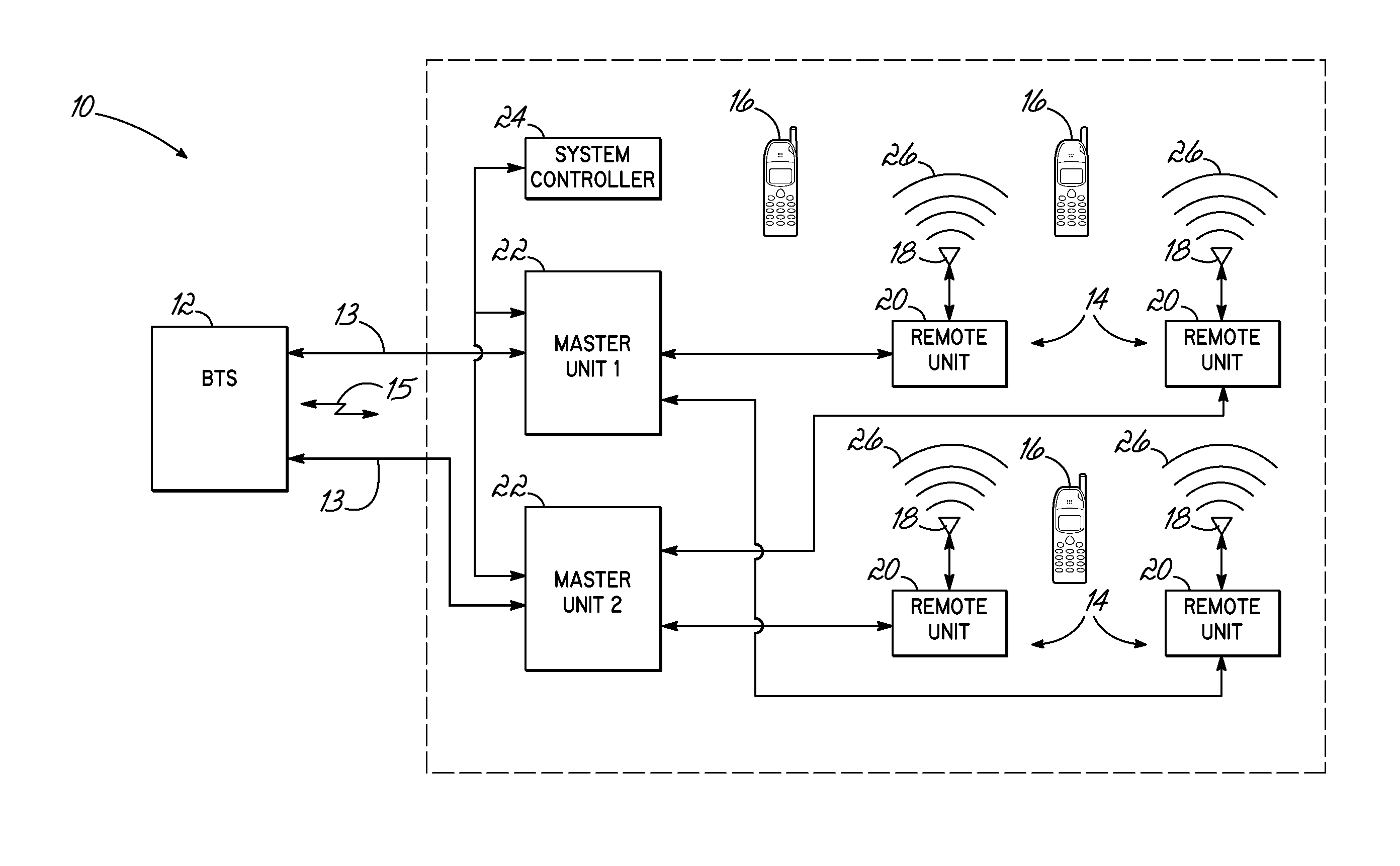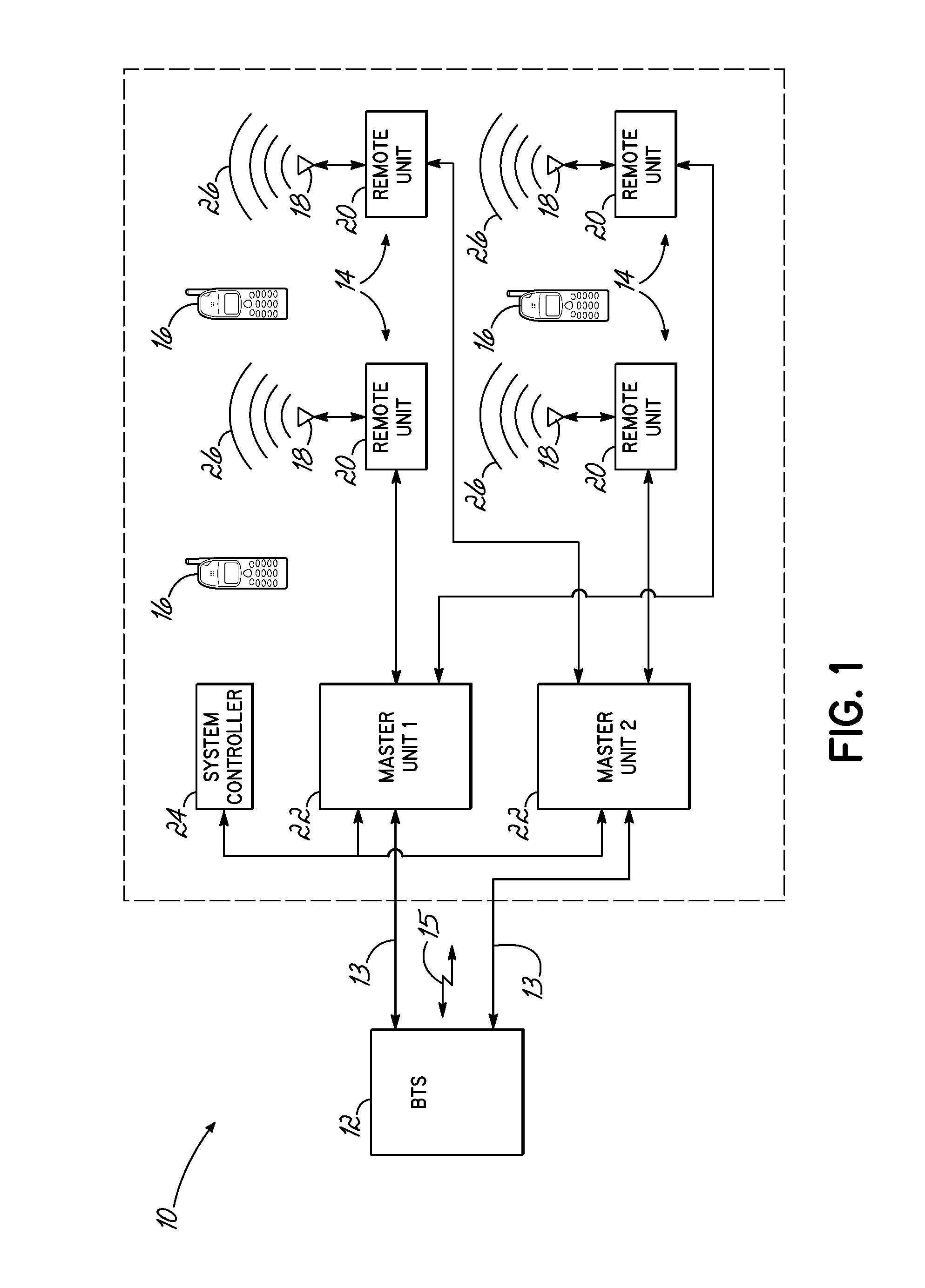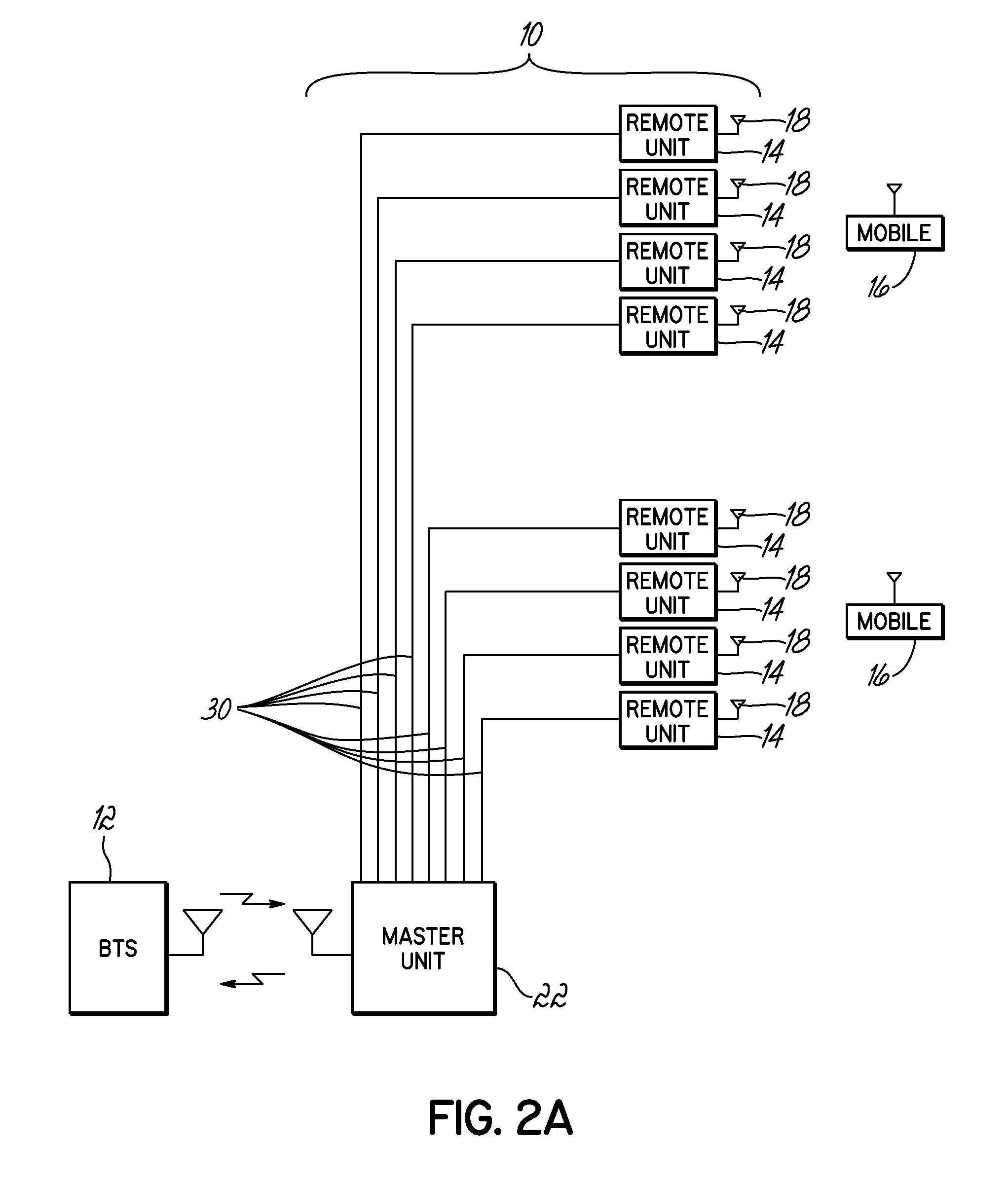Uplink noise minimization
a signal repeating system and noise minimization technology, applied in power management, electrical equipment, radio transmission, etc., can solve the problems of desensitization of base stations, reducing the range of mobiles or the maximum distance, and adding the noise floors of each of the remote units
- Summary
- Abstract
- Description
- Claims
- Application Information
AI Technical Summary
Benefits of technology
Problems solved by technology
Method used
Image
Examples
Embodiment Construction
[0022]The present invention is directed to a method and apparatus for controlling uplink signal power in a distributed antenna system that has a master unit and a plurality of remote units. The master unit is coupled with a base station, and the remote units are coupled with the master unit. The invention includes monitoring of a noise condition of a distributed antenna system, and dynamically adjusting an uplink gain within the distributed antenna system, that is applied to uplink signals to a base station, based upon the monitored noise condition. In one exemplary embodiment, the number of active status remote units is determined, and the uplink gain is dynamically adjusted by increasing the uplink gain in response to a decrease in the number of remote units that are active status, and decreasing the uplink gain in response to an increase in the number of remote units that are active status. Other embodiments of the invention, as set forth herein, are also contemplated in the inve...
PUM
 Login to View More
Login to View More Abstract
Description
Claims
Application Information
 Login to View More
Login to View More - R&D
- Intellectual Property
- Life Sciences
- Materials
- Tech Scout
- Unparalleled Data Quality
- Higher Quality Content
- 60% Fewer Hallucinations
Browse by: Latest US Patents, China's latest patents, Technical Efficacy Thesaurus, Application Domain, Technology Topic, Popular Technical Reports.
© 2025 PatSnap. All rights reserved.Legal|Privacy policy|Modern Slavery Act Transparency Statement|Sitemap|About US| Contact US: help@patsnap.com



